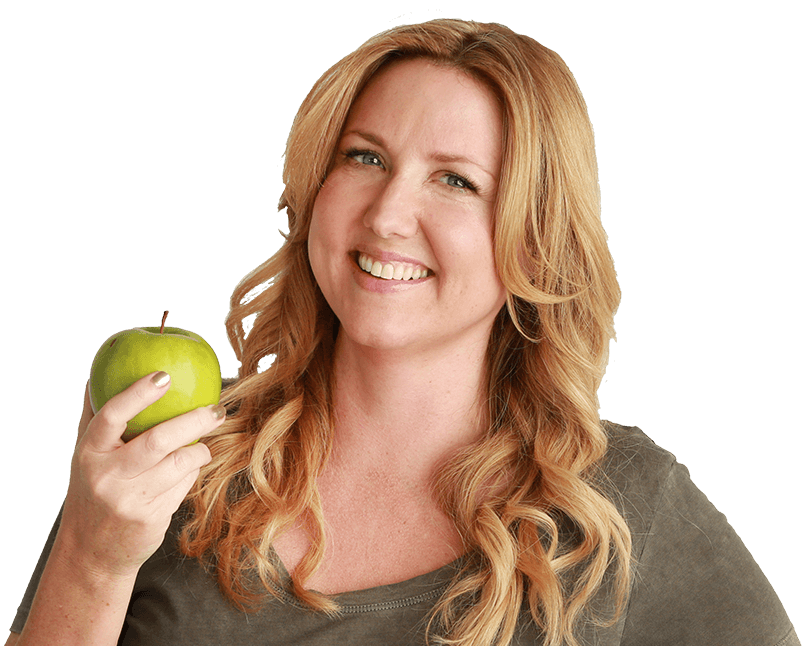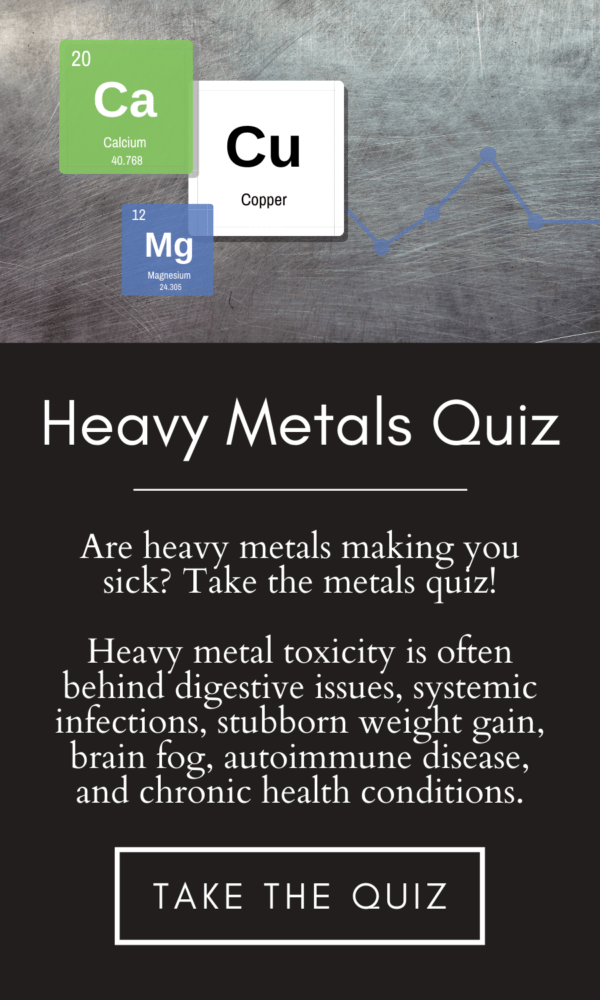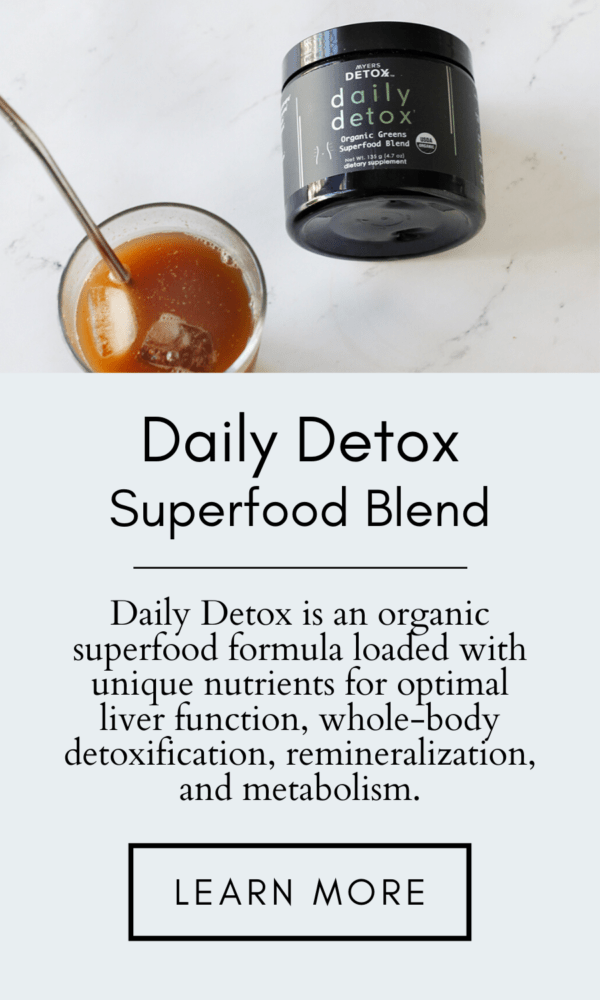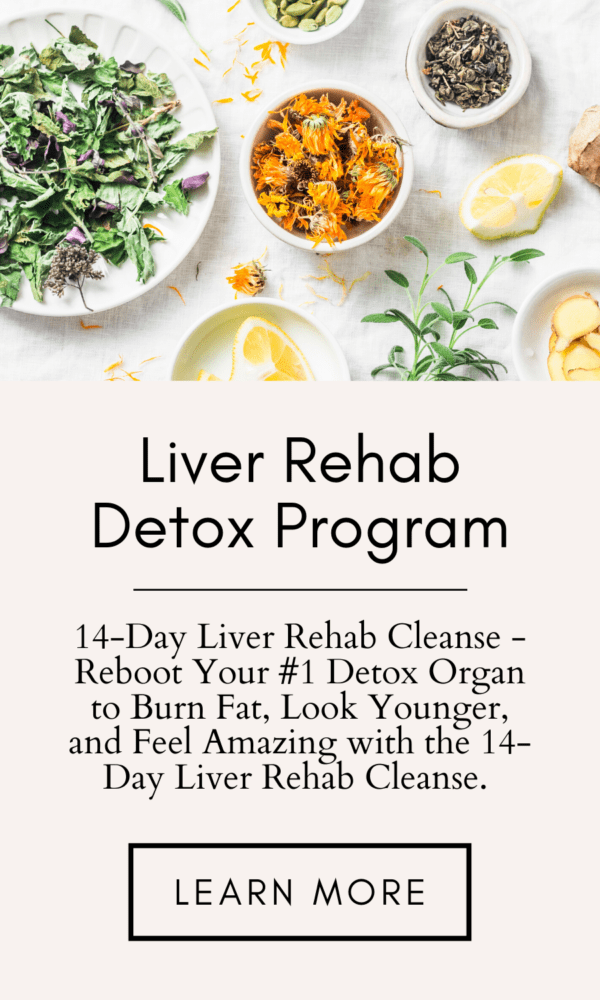Listen
Listen to this podcast or watch the video. CLICK HERE
Transcript
Wendy: Hello, everyone. Wendy Myers here, from myersdetox.com. Anyone determined to be healthy takes supplements. And that’s why I brought together all the health experts for the Medicinal Supplements Summit, because I’m committed to helping you experience the health that you deserve through taking the right supplements for you.
Today my friend and special guest is Michael McEvoy. He is the founder of metabolichealing.com. And he’s the creator of four clinical training programs, including The Blood Sugar & Insulin Resistance Mastery Course. In addition to being the author of more than 300 web articles, Michael has created the Metabolic Healing Functional Blood Chemistry Analyzer and Nutrigenomic Reports, which are used regularly by clinicians and his clientele. Michael is a clinician, researcher, and educator. And he lives in Santa Cruz, California.
Michael, thank you so much for joining us on the summit.
Michael: Thanks, Wendy. It’s great to be here.
Wendy: Why don’t you tell us a little bit about yourself and how you got into health?
Michael: Well I’ve been doing what I’ve been doing healthwise for, oh, about ten years or so. And the journey began with me as a personal experience with health, as it does for so many people. I’d basically gotten to a point where I was very sick. And I was extremely underweight. And I was not healthy. And I was in a place in my early 20s where I was ready to really transform and to experience something better. I had a distrust for western medicine.
And even though I didn’t really know much about it, about alternative healing and natural medicine, I did seek out help from friends of mine who had gone through similar experiences. And they basicallyled me down the path of really becoming more responsible for my health.
And that really became a big shift and turning point. I previously was unaware that a person could literally be their own healthcare provider and serve as their own, in many ways, doctor, or care for their own body in just a very simple way. To me that concept before didn’t even exist. And I realize now that it doesn’t with so many people in the world. People are often dependent on others for their own health. And I think that that can lead to problems.
But long story short, I basically kind of made a determination and a certain vow that I would do everything I possibly could to get as healthy as I possibly could. And I quickly regained my weight. At the time when I had gotten sick I was down to 120 pounds. I’m five foot seven. And right now I weigh about 165.
And I had very serious bowel problems and digestive distress that had led me down that path. And within a matter of months I regained my health. And within a few years I realized that was something I wanted to do professionally. And I’ve been doing it now for about ten years or so.
Wendy: I love seeing people taking responsibility for their own health. A lot of the listeners of this summit are hungry for information to take control of their health. AndI know a lot of my clients, it’s amazing how much they know and have educated themselves. It’s what you have to do. No one’s going to care about your body and your health as much as you.
Michael: That’s right. That’s what it comes down to, is you’ve got to become your own authority. And that shouldn’t take away from the fact that there are many great practitioners. But they only can point in a certain direction.
Ultimately, at the end of the day, you’re the one that has to be responsible for everything that you do healthwise.
Wendy: Yeah, so let’s talk about blood sugar. In layman’s terms, can you explain how blood sugar metabolism works and why it’s so critical to get it under control?
Michael: Yeah, so I’ll start out and preface this by saying that in the United States, statistics show that approximately one out of three people is already diabetic. And about 46 percent of the U.S. population is either diabetic or prediabetic. That’s nearly one out of two people. So we’re dealing with a raging epidemic that certainly didn’t exist even 100 years ago. And the figures are going to continue to rise if something isn’t done about it. But type 2 diabetes and insulin resistance is an entirely manageable disease. It’s something that can be entirely managed and even completely reversed in many cases, just with some basic attention to some dietary nutritional principles.
What I want to talk about now, just to answer your question, is, first of all, all of the parts of our body, all of our cells, burn and use glucose as a source of fuel and energy.
And diabetes and insulin resistance are not really a disease of blood sugar, even though blood sugar levels elevate and that certainly causes downstream problems when that happens. But it really is a condition of inflammation and insulin resistance.
Basically when the cells don’t utilize glucose correctly, if they can’t take them up, can’t burn the glucose correctly because of a signaling problem or an inflammatory process that underlies that, this leads to all kinds of different complications and various risk factors, such as cardiovascular disease and neuropathy related symptoms.
And very high levels of inflammatory processes begin to rise. So while blood sugar, getting that under control, is central to health, it is not, in and of itself, a disease of blood sugar. It’s a disease of poor signaling and in inflammatory processes.
Essentially when you eat food, the body will metabolize those foods. And you’re going to produce a hormone called insulin. Insulin is the main mechanism that binds glucose to cells so that the glucose, the sugar in the blood that goes up when you eat food… and, by the way, your glucose levels will rise with the consumption of carbohydrates, sugars, but even protein, for that matter.
All foods basically will break down into glucose eventually. Even fats will break down into glucose, to some degree, eventually. But the insulin is what enables glucose to enter into cells. And then when the glucose gets into cells, it’s very much like when you’re putting gasoline in the car.
The engine begins to metabolize, begins to burn. And the engine and the metabolism burn up the glucose. And then you have metabolic processes. And you have all of the different things that our body needs to do. You have energy.
You have a normal circadian rhythm. You have DNA repair. All of the normal things that cells are supposed to do function when these processes work correctly. But when insulin doesn’t attach to the receptor on cells, it creates a situation that’s called insulin resistance. And this is where there’s a communication breakdown, basically. The cells are not talking to the hormone insulin correctly. And so the glucose doesn’t get into the cell as it needs to.
And so actually, inside of the cell, there can be a low level of glucose. But outside of the cell there can be a very high level of glucose. And so all of this glucose that’s outside of the cell that doesn’t get burned up can then go down, causing various inflammatory processes. And the long term consequence is type 2 diabetes. So in a nutshell, that’s how it works.
Wendy: Okay, so can you explain how diabetes is not simply an insulin insufficiency and why administering insulin alone doesn’t always keep high blood sugar under control? My father had diabetes and started with the pills, the metformin, and then worked his way up to the injections. And his diabetes spiraled out of control. It was in the 500s at some point. And the insulin didn’t help. Can you explain why that would be?
Michael: That’s an excellent question and something worthy to address. So there are multiple kinds, but the main ones that are known about are insulin resistant type 2 diabetes and insulin dependent type 1. Type 1 diabetes is a condition where the pancreas doesn’t produce insulin. It literally is a deficiency of insulin production. And that is, in many ways, an autoimmune disease.
But type 2 insulin resistant diabetes, which is the most common kind, is better termed insulin resistance. And it’s not a deficiency of insulin. It’s a problem of communication. It’s a problem where the body’s still making insulin, producing it, but the cells aren’t taking it up. Again, there’s a communication breakdown.
I’ve had many clients who were given insulin by their doctors. And I’ve seen as much as 50, 60 units of insulin, if not more, given to try to drive the glucose into the cells. And what eventually happens is the cells will continue to reject the insulin. And the person’s blood sugar will continue to go up. So it’s adding insult to injury by just giving insulin alone. So I’ve actually seen a person inject themselves with insulin.
And then within the following hours, their glucose levels will actually skyrocket as a result of that because it’s a communication breakdown. And unless you actually address what the problem is and how to improve the mechanisms of insulin utilization and reduce the inflammatory burden, you’re not only just treating symptoms, but you’re making the problem worse.
Wendy: Yeah, and it’s sad. I see a lot of people and older people in my family just doing the insulin injections. And their diabetes are just getting worse. You have to do more. Can you talk about some of the pitfalls of the diabetes medications that people are being given?
Michael: Well there are all kinds of different medications that are used. For example, you mentioned metformin. Actually, that is probably one of the less harmful of the drugs that have been on the market. There have been literally drugs in the past that have been pulled off the market because they’re very deadly. But all medications typically have the potential for toxicity as well as altering and reducing the absorption of certain nutrients like vitamin B12 and folate and altering the intracellular processes of metabolism.
So what I would like to talk about and I would like to impart to the listeners, and this is not something that I’m making up; I’ve done my research –hundreds if not thousands of hours of research on just this topic alone — there are literally dozens of botanical herbal compounds as well as nutrient compounds that have been proven in the scientific literature to act on more pathways than any diabetic drugs that are equally or more effective than any of the particular medications that are used.
And as a clinician, I’ve witnessed their effects. I’ve watched them. I’ve used them. I’ve monitored them. And I’ve basically come down to the best ten or so in terms of the clinical efficacy. We now can get to a point in practice where we can take somebody that has a blood sugar level that’s so high, and within a 30 day period we can either completely normalize the blood sugar or bring it under control to such a degree where even if the person is stilltaking insulin, for that matter, we can actually help the insulin to work better. So there are all kinds of things that can be done nutritionally speaking that will work to the benefit of the person in the long term. And we can do that as quickly as in 30 days.
Wendy: That’s amazing. So let’s talk about some of those supplements that you’re talking about and how they normalize blood sugar.
Michael: So I’d like to talk about a handful of them right now. There are basically five that I want to really focus on. And I’m going to talk about some of their effects and why I recommend them. I should also say this. There is no single, bulletproof, one size fits all treatment for anybody.
In an ideal world you’re going to work with somebody that has knowledge of how to interpret blood chemistry, how to construct an individualized diet nutritional program that will include not only supplements but also, just as importantly, the correct diet as well as the correct lifestyle factors, the correct types of exercise. And if the client is on board with a full program that really is truly holistic, the supplements will work ten times better.
That’s the key thing with taking any supplements, is that we’re not wanting to use them as the only answer. But if we get all of these other components working together: diet, lifestyle, exercise, motivation, stress reduction, we find that the supplements have a much more powerful therapeutic effect because they’re supplementing with all of the things that we’re doing to support our health.
And that’s a really key thing. So I wanted to mention that first. So let’s go into what some of these supplements are and why I recommend them. And I’ll even talk about what they do. So the first is alpha-lipoic acid. Alpha-lipoic acid is a very powerful antioxidant. In addition to functioning on various aspects of blood sugar metabolism, it has the ability to improve and increase the function of certain other antioxidants in the body. So it works to boost the body’s production of glutathione, for example. This is a very important antioxidant when it comes to type 2 diabetes and insulin resistance, one that becomes used up a lot, an antioxidant that becomes wasted.
And we have to give attention to antioxidants in type 2 diabetes because there’s an overwhelming amount of inflammation and what’s called free radical damage that’s taking place. And we see this basically with every single person that has very high, chronically elevated blood sugar, is they’re using up their body’s own antioxidant systems. So we need to replenish those antioxidant systems and to support the body’s own antioxidant processes.
And we can do that with alpha-lipoic acid. It’s a very powerful antioxidant. But it does more than modulate various anti-inflammatory processes. It also acts –and I’m going to use this term a lot in this dialogue with you –as what’s called a GLUT4 stimulant.
So what is GLUT4? That’s a very important protein that every diabetic needs to know about. And so what GLUT4 does is it’s basically the communication center between the inside of your cells and what’s going on in the outside of your cells.
It literally will make the body take up the glucose into the cells with or without insulin resistance. So if a person is injecting themselves with insulin, they’re not helping that GLUT4 protein to work any better. They’re just pumping more insulin into the system. But what you really need to be focusing on is the ways to promote and stimulate this GLUT4 transporter. And alpha-lipoic acid is one of the best nutrients for doing that.
So when you stimulate GLUT4, it’s like you’re turning on a metabolic switch. It’s like you’re turning on an activator switch that’s basically saying to the cells, “Aha, let’s start working again.
Let’s start getting this glucose and start using it.” But in order to do that we have to get it into the cells. So when you stimulate GLUT4 with alpha-lipoic acid in some of these other compounds, you’re doing just that. You’re telling the cell, “Hey, wake up. Time to start metabolizing this glucose,” with or without the insulin. You don’t need the insulin to get the glucose into the cell.
That’s the interesting thing, is that you don’t need insulin to get glucose into a cell. You could do it by stimulating GLUT4. So alpha-lipoic acid is key for doing that. Alpha-lipoic acid is also very versatile for other reasons. When you’re dealing with complications of type 2 diabetes, and this can include diabetic neuropathy, so neuropathy, nephropathy, and retinopathy are the major complicating factors, nerve damage in really chronic cases, where you start seeing loss of limb function and terrible circulatory function, these are basically the long term effects of type 2 diabetes.
But alpha-lipoic acid helps to improve what’s called nerve conduction velocity. It helps to actually improve the function of the nerve in the long term. So it’s an extraordinarily powerful and beneficial antioxidant nutrient. So that’s the first one.
Wendy: About how much of that should someone take daily?
Michael: Well a therapeutic dosage of alpha-lipoic acid, for somebody who’s insulin resistant, I would typically use around 600 milligrams a day. And sometimes I would like to divide that dose up, maybe 200, 200, 200 or 300, 300 if you could do that. But typically taking about 600 a day is the therapeutic dose. You can go higher than that in some cases. There’s another form of lipoic-acid called R-lipoic acid.
And that’s probably a little bit better absorbed than the alpha-lipoic acid. It’s a little bit more expensive. But it’s going to work a little better. You’re not going to have to take as much of it. So more of it will be utilized. But alpha-lipoic acid, in general, and R-lipoic acid are two very critical B vitamin antioxidants that are used.
So the next ones, we talk about these two together, are berberine and bitter melon. If you look at herbal Materia Medica, or the herbal catalogue, there are literally tens of thousands of plant medicines that are around the world.
And I’ve spent hundreds of hours researching what all of the big ones are. And there are some really exotic plants that are used by indigenous cultures for insulin resistance many people have never heard about. But when you break it down, you’re looking at about the top three, four, five botanical herbs that have a remarkable ability to act as glut for stimulants as well as other intracellular processes of blood sugar metabolism.
So berberine is a plant alkaloid that’s been derived from a variety of different kinds of plants. So Goldenseal, Oregon grape root, phellodendron bark, Coptis Scuttelaria, these are very bitter plants that have been used historically for thousands of years. And they contain this very yellow, extremely bitter alkaloid known as berberine sulfate, berberine. And berberine is like lipoic acid, but it has a very targeted effect, I think even stronger than lipoic acid, from my clinical experience.
Studies on berberine have found that it is equally or more effective at stimulating the GLUT4 transport system than the drug metformin is. And this is a study that was done in the last four years or so, 2011, 2012. But berberine has a number of other anti-inflammatory functions. We know that it’s antifungal. So a lot of times it’s a versatile supplement with a lot of insulin resistant folks because, for example, the incidence of yeast infection is very common among diabetics because they have chronically high blood sugar.
And that can certainly be feeding yeast in the body, intestinal microbial overgrowth. Berberine is a very effective antifungal for that reason. And it’s often used as an antifungal to kill Candida albacans. Berberine has been shown to have very powerful cardio protective effects. And it lowers LDL cholesterol, but it lowers it in a completely different way than statin drugs do.
A lot of diabetics are on statin drugs, Lipitor. It’s just the standard regimen that you give a diabetic. And you’re always going to see people on it. But berberine lowers LDL cholesterol in a completely different way than statins do. It does it by basically altering how the LDL gets recycled in the liver. And this is totally different. This is a much better and safer mechanism than inhibiting coenzyme A, which is what statins do, which is a very toxic way of lowering cholesterol.
But additionally, berberine has been found to be very effective in dealing with cardiovascular complications, such as pulmonary conditions and chronic heart failure. It’s been shown in the literature to attenuate and reduce very toxic inflammatory molecules, such as free fatty acids, which is what are damaging nerve cells and tissues. Free fatty acids are basically like free radicals in an explosive form. Berberine inhibits that. So for the insulin resistant client, berberine is extremely effective at modulating the GLUT4 protein that, again, wakes up the cells, says, “Hey, we’ve got to take up the glucose.” But it’s also reducing a lot of the other potential complications.
In terms of the dosage of berberine, therapeutically speaking, what I’ve seen to be effective at bringing glucose down significantly, I’m recommending somewhere between 1000 to 1500 milligrams daily over a course of 30 days.
And usually when including that with a regimen of supplements that target a lot of these same transport mechanisms, the berberine is one of the big ones that we’re using. It’s one of the major botanical compounds that are just going to get the job done. So that’s the little skinny on berberine.
The next one is bitter melon. And bitter melon contains these compounds known as Momordica. Momordicans and bitter melon have been shown in the literature to also stimulate the same GLUT4 transport system that migrates to the cell membrane, allows the glucose to diffuse into the cell. And it does that at about 750 to 1000 milligrams daily, when you’re using bitter melon. Bitter melon also is another very interesting molecule, another interesting herb.
Those Momordicans contain compounds which evidently stimulate a protein known as adiponectin. So adiponectin, many people who get really into the weight loss research are always looking for new diet supplements that are kind of out there. And quite honestly there’s a lot of BS out there, in my opinion. But once you actually start to look at the science and the literature, there really are some botanicals and nutrients that really do have a profound effect.
And when you understand these mechanisms of why they work, you can really start to appreciate and then use them. And when I use them in practice, I say, “Wow, that really did work.” But bitter melon is one of these that stimulates adiponectin.
So adiponectin is inversely correlated with obesity. So the more leptin resistant, the more insulin resistant, the more adipose fat that a person has, which is the abdominal fat around the waistline, the lower the levels of adiponectin have been shown to be. And so when you boost adiponectin you help to increase the fat burning. And so this fat burning, when I say fat burning, I literally mean burning triglycerides, the fat cells are literally taking up glucose and starting to be more metabolically active. And that’s really a key when it comes to weight loss, is making the fat cells more metabolically active.
S bitter melon, I’ve actually found that to be an effective weight loss supplement when somebody is insulin resistant. It’s not something I’m necessarily recommending unless they’re insulin resistant. But I’ve found that it really does seem to diminish a person’s waistline if they’re taking it regularly, 750 to 1000 milligrams daily. And it could do that in as little as a month. So obviously we know the concern with obesity and diabetes. They tend to go hand in hand. And so I’m usually recommending berberine, bitter melon, lipoic acid together in some formulated combination. And I’m getting very good results with that in practice.
Another one I wanted to talk about is magnesium. Magnesium is a very important, what’s called, macro mineral. And minerals, they’re catalysts. Think of your car and how your car needs to have fuel. But it also has to be mechanically running correctly. Sometimes if your miles per gallon is going down, you might need to look at the wiring. You might need to change the spark plugs. You need to get, what, a tune up, right? So in the same way magnesium serves as a spark plug to how the engines of your metabolism work.
And a lot of minerals do that. Magnesium activates about 330 to 350 different metabolic enzymes in the body, including the metabolic enzymes that are involved in insulin signaling inside of your cells. So in order for the insulin to attach when your pancreas releases insulin following a meal, when your blood sugar goes up, under normal circumstances the insulin attaches, the glucose enters the cells, GLUT4 diffuses it in.
And then you’ve got all of these other really complicated things that start going on inside of the cell. And so magnesium basically helps to make all of these processes in the cell, what are called the downstream insulin utilizing effects, work better. And it’s going to be very difficult to get things like IP6 and IP3 to start working, these downstream insulin signaling processes to work, if you’re magnesium deficient.
And a very large percentage of the population is magnesium deficient. That’s been very well established. It’s one of those minerals that I always see repeatedly, over and over and over again, as being low because the diet is low in it or the soil that the food is grown in is low in magnesium. So magnesium is one of those key minerals that comes up over and over and over again that I’m always using and recommending.
Now, of course there are many different forms of magnesium. Magnesium has a very calming effect typically. A lot of people that are diabetic and insulin resistant have a very high stress response.
The blood sugar is throwing their cortisol levels out and vice versa. And so their adrenal system is really disregulated, oftentimes. And so what magnesium does is it helps to really slow the process down to bring a lot more calm and balance into the system, stimulating the parasympathetic nervous system.
So we like to use different forms of magnesium, like magnesium threonate, magnesium gluconate. These are typically very well absorbed. And they get into the brain and nervous system in a more productive way than other forms of magnesium do. So that’s the fourth one, is magnesium.
The fifth one is something that many people have never ever heard about before. And honestly I didn’t hear about it until the last year or so. But it’s called tudca. And tudca is a very unique and very underappreciated supplement.
But there’s actually a pretty tremendous amount of scientific research about it that is pretty mindblowing. Tudca is a taurine, which is an amino acid, taurine based bile salt. And it’s basically something that the body makes in very tiny quantities.
So it’s available supplementally and obviously in higher amounts. But there’s been a considerable amount of research that’s been done on tudca with respect to neurodegenerative diseases as a possible way to normalize various types of inflammation in people that have Alzheimer’s disease, ALS, and Parkinson’s disease, even retinal degeneration, for that matter, which is fascinating that a bile salt could actually function as neuroprotective. But the scientific studies have been done on it.
And the U.S. government has even funded small trial studies in humans for it. Tudca has also been shown to increase insulin sensitization. And that’s something that’s very important. Remember that type 2 diabetes is not a disease of blood sugar. It’s a disease of signaling problems, insulin resistance, cells not using, not communicating with the insulin hormone correctly. But what tudca does is it helps the insulin to work better, helps the insulin to attach to the receptor better.
And so this is something that I’ve been using a lot as of late. And I’ve actually been seeing some pretty considerable results with it. I’ve seen that clients that have been injecting themselves with a lot of insulin for a long time have to use considerably less, even to the point where they don’t even need it anymore because the receptors are starting to work again. And tudca is a supplement that can actually help to kind of retrain the body to get those insulin receptors working. Again, this is according to the scientific literature. And my clinical experience seems to validate that as well.
Wendy: Are there any products out on the market today that contain all of these, or any kind of combo product that you would recommend to control blood sugar? Or do you just need two large doses of each one of these to make one product sensible?
Michael: Well, there are some products that contain some or most of these, not all of them. So the tudca, for example, you do need a pretty considerable dosage to get the therapeutic action. You need at least 1000 milligrams of that daily. And that’s going to be really difficult to formulate in just a single supplement.
But the good news is that you don’t necessarily need to take a ton of supplements to get your glucose levels under control. I’m a minimalist when it comes to supplementation. I try to use only the most that is needed to get the desired effect. But sometimes that comes into really realizing that you need to use more of something and less of something else. So it really does become an art and science of balancing nutrients out.
There are obviously a number of really good products that are on the market today, and a number of companies that I think are doing a really good job. I like using the Natura brand, which is an herbal/nutriceutical compound that contains a lot of these herbs that we talked about today. Clearly there are other companies, too, that are very quality. Pure Encapsulations, for example, makes some good products. But a lot of this stuff is very easy to find; it’s very readily available. Maybe one day I’ll even formulate a product that’s very specifically involving all of these things.
Wendy: Yeah, so in your experience, what are the most important factors for diabetics to get their blood sugar levels under control?
Michael: Well first of all, what we have to address, Wendy, is motivation. And what I’ve experienced with at least the majority of diabetics, obviously not everybody, is they’re not motivated to change. There’s something that they’re doing in their life that’s preventing them from actually getting healthier.
They’re almost stuck in this insulin resistant state mentally and psychologically, even emotionally. And that motivational factor is something that really needs to be worked on on a level that isn’t even necessarily physical.
But emotional guidance and coaching is really integral, I think. A lot of people are just lonely. A lot of people don’t have companionship. And they just feel sorry for themselves. Or there’s something that they’ve done in their lives that has been either traumatic or stressful or harmful. And they’re in a self-destructive mode. And so really needing to address that is really important.
The standard of care doesn’t even come close to addressing these kinds of concerns. But I’ve found that by doing so you really start to kind of root out the behavioral problems that may be associated, even causing and driving all disease process. So that’s the first thing, is motivation, if you can find clients that are really motivated. If somebody comes to me and they’re not willing to do the program, and you’re having to convince them, it’s almost not worth working with them until the point where they’re really ready to do it.
But those that are ready to do it, those that have the motivation and the will, or I can maybe motivate them easily to do it, will be the ones that get huge success in a very short period of time. And once everything starts rolling, it’s like you reboot the car. You tune everything up. You get everything working better. And guess what? You really start doing it on a regular basis. It becomes a regular practice. So the motivational thing is absolutely huge.
There are three other main factors that I want to discuss with regards to what are the factors that we need to be working on. The second, of course, is diet.
And with respect to diet, I’ll say this, there are obviously certain foods that everybody should avoid, like junk food, processed food, genetically modified foods or chemically laden pesticides, which are toxic to the body, fast foods, things like that. These are things that obviously everybody should avoid.
But when it comes to the actual foods, when you really look at what are the really important dietary things a person should be doing to get them healthier, those can be very individual. I’ve seen vegan and vegetarian diets be involved in resolving a person’s type 2 diabetes. But I’ve also see that fail miserably.
I’ve seen some people really need a higher fat, almost ketogenic diet, in order to regulate their blood sugar. And that actually has been shown to be effective in some cases but not with everybody. So really the diet itself is critical but that comes down to individual factors and considerations.
The third thing is exercise, clearly, because one of the easiest ways to start burning up glucose is moving your body and exercising. You can get on a treadmill. You can power walk for 20 minutes. But it doesn’t take much to start stimulating the body’s innate processes of glucose metabolism. Exercise is absolutely key.
And it’s definitely part of any recommended protocol or program that I construct. Fourth, obviously, is supplements, as we’ve talked about today, because supplements will really work to your benefit when you get a true holistic program together. And we find that when we get these four things in place, lifestyle, motivation, diet, exercise, supplements, we really start to see dramatic changes in as little as 30 days.
And as a clinician that’s not only worked with clients but trains other clinicians, we want as many clinicians to be practicing these kinds of methods regularly. Believe me, there are tens of millions of diabetics out there, that are out in the world, just in the United States alone. They’re out there. And there’s definitely something we could do right now without hesitation to start flipping this paradigm on its head very quickly. And that’s the motivation that I have behind it.
Wendy: One thing that I’ve noticed with my father and other people I know that are diabetic is they seem to eat a lot of sugar. And one of the reasons is when they do insulin injections, if they happen to get too much at that moment in time, their blood sugar drops too much, and they want to eat sugar to bring it back up.
Michael: Yeah, it’s a crazy, vicious cycle. And it’s an insane cycle, really, because dietary sugar intake is clearly one major factor for the development of insulin resistance to begin with. The over hyperstimulation of insulin production will eventually lead to the body just saying enough is enough. We’re not taking insulin any more.
But it’s true, the insulin injections can certainly, in some instances, many instances, drive a person into a hypoglycemic state, where their blood sugar is completely the opposite. This is not a long term solution to this problem. You have to really start looking at some of the more important factors that are really going on. We can do that.
Wendy: Is there an easy way for someone with diabetes to find the right diet that suits them? You talked about how vegetarian, vegan works for some people, other people ketogenic. How do you go about finding the right diet that works for you?
Michael: Well it’s actually very, very easy. And I’ve been doing this for the last decade. How can we identify a person’s diet easily? And really a lot of the individual metabolic factors come back to appetite, food cravings, meal satiety.
A lot of diabetics will report they have no metabolism. They don’t feel hungry. They don’t want to eat at all. Well these are the people that will probably do best with a pseudo-vegetarian diet. And if they follow it, they’re giving their body the metabolic fuel it needs. A pseudo-vegetarian diet means they’re consuming lots of vegetables and plant foods. But some diabetics are quite the opposite.
Some diabetics have an extraordinary appetite, where they feel that they’re constantly hungry, constantly having to eat, are never satisfied, never satiated. And these are the people that need more fat and protein in their diet.
And this is more the correct way of eating for them. I can give 50 case study examples of how half of the people were more the vegetarian type and the other were fat burning type. And they’re all diabetic to begin with. And clearly when you start implementing the right diet, you start seeing big changes.
And those traits and characteristics that I mentioned: appetite, meal cravings, satiety, food cravings, these things can change over time. A person’s metabolism isn’t necessary the same their entire life. It can fluctuate because of many factors. For women it can fluctuate because of their hormone balance and their menstrual cycle. But for all of that matter your metabolism can change and be influenced by a lot of different factors all the time. So I always teach clients listen to your body. You kind of get the signals and understand how to interpret the signals.
So when you’re craving sugar it doesn’t mean you need to eat more sugar. That’s a miscommunication. Craving sugar means that you’re having blood sugar disregulation problems. It means that your blood sugar levels are fluctuating too much. You’re probably going through hypoglycemic periods.
And if you’re craving sugar, it’s typically because you need more fat and/or protein.
Wendy: Yes, and it’s scary. When you’re diabetic you’re really only supposed to eat 25 grams of sugar or carbs. That’s such a low amount. I know everyone’s different, but it’s an extremely low amount. Say you eat a candy bar, that’s enough sugar for two days. That’s your max. You’re already maxed out. Can you talk a little bit about the daily limits people should have and their sugar and carbohydrate intakes?
Michael: Well clearly the standard one size fits all recommendation that’s recommended by the American Diabetic Association is completely nonsensical.
And it absolutely doesn’t take into account the complexity factors that each person’s experiencing that’s influencing their metabolism. And that’s basically what you get with the standard of care. You get a one size fits all cookie cutter approach, rubber stamp, send it off, and the next person gets the same thing.
We have to treat individuals as individuals. And we have to make healthcare much more individualized. And that means really giving attention to all of the factors that are influencing a person’s health. So in terms of what a person needs nutritional speaking, it’s not clearly across the board. Some people do need some kind of carbohydrates in plant fibers.
Clearly, in my opinion, the best source of carbohydrates are from vegetables. They’re not going to create the same glycemic spike that fruit will, for example. And sometimes when you’re dealing with clients that have symptoms of diabetic neuropathy, you need to really, really get glucose levels as optimal as you possibly can.
Fructose, which for some people is not a problem, if you’re dealing with diabetics over the long term, fructose is going to become a problem unless you get your blood sugar under control. So fruit sugar can actually be very harmful because it enters into a pathway that will potentially create the formation of glycated proteins, the polyol pathway, leading to the formation of advanced glycation end products. And fructose and fructosamine levels can certainly cause these problems as well as in some people that have disregulated glucose.
Again, I’m not speaking generally. I’m speaking about a very specific patient population of people with long term diabetic problems. These people need to be really careful with sugar intake in general because it’s going to absolutely cause chaos in their body.
And that’s the other thing, is the diabetic complications are really something to also be addressed hugely with diet supplements and nutrition. And things like alpha-lipoic acid and also benfotiamine, which is a form of vitamin B1, help to reduce the formation of advanced glycation end products. And so we could talk a little bit about that, too, if we have time.
Wendy: Yeah, sure, because I’ve read that the advanced glycation end products almost cause sclerosis of the cells and hardening of the cells. They can get harder for glucose to get in, exacerbating the problem.
Michael: So kind of one of the things that we’re having to deal with now is the human body is not perfect. A lot of people think that everything the body makes is perfect. It’s not. There are some flaws. But the main problem of course is that we’re putting toxins in our body, and we’re not eating right, bombarded with all these factors that are influencing our body. But the thing is that the retina in the eyes, the nerves which run everywhere, and the kidneys, none of those cells require insulin.
So in many ways, when a person becomes insulin resistant, they actually are somewhat protected from the potentially damaging effect of glucose. Muscle and fat cells can become insulin resistant. Liver cells can become insulin resistant. But the retina, nerves, nerve cells, and kidneys don’t. That’s why diabetics develop retinopathy, neuropathy, and nephropathy, because if a person has high levels of blood sugar for decades, all that blood sugar is just passing into the kidneys, eyes, and nerves.
All that glucose is just going into those cells without any insulin, continuously. And what happens is that glucose begins to glycate. It begins to stick to proteins. It sticks to white blood cells. It sticks to different lipids. And it causes what’s called glycation. And this is basically a very extremely toxic situation.
Glycated proteins trigger tremendous amounts of inflammatory processes in the body. And this is where you start to see a lot of the really toxic symptoms that are associated long term with diabetes. But we can go right in there, and we can cut the supply of advanced glycation end product formation. We can shut down the polyol pathway first by diet, getting all the junk food out, getting some supplements in to help the body to burn the glucose up better so it’s not floating around in the blood stream.
But then we can even intervene with things like benfotiamine and l carnosine, which is a very powerful amino acid, these two nutrients together, benfotiamine, l carnosine. There are actually some others that used to be legal in the country but aren’t anymore. There was an analog of vitamin B6 known as pyridoxine. But the FDA banned it because it was being studied in a drug trial because it’s very effective in diabetic neuropathy.
So you can get it in Europe, but you can’t get it in the U.S. If anybody has a black market source, let me know. But these basically shunt the formation of an enzyme in the polyol pathway known as aldose reductase.
Aldose reductase is the enzyme that converts glucose into sorbitol. And then sorbitol forms advanced glycation end products and creates all this toxic soup in the cells.
Sorbitol is very toxic. And it should be avoided entirely. But your body can actually make it when there’s too much glucose going on. That enzyme aldose reductase gets stimulated. So we can shunt it with benfotiamine and l carnosine and lipoic acid to an extent. We can drive the glucose elsewhere, preventing these symptoms and supporting the body’s natural processes.
Wendy: Yeah, and one of the things that I think is important for anyone who’s diabetic or prediabetic to keep in mind is that there are very serious complications to diabetes. And no one thinks it’s going to happen to them.
And that’s the problem, is kind of this attitude of hey, if it ain’t broke, don’t fix it, like people feel fine, and they don’t want to change their diet. But the reality is, people lose their sight. They get their legs cut off. They lose toes and things like that. Can you talk about some of the complications of diabetes and why they’re so problematic and what can be done about it?
Michael: Some of the earliest memories I have as a child was watching my grandmother die of type 2 diabetes. She eventually died of cardiovascular disease. She lived to be 82 years old, but she wasn’t healthy the whole time that I knew her. And she was never taught how to eat correctly.
When she migrated to this country from Europe she basically consumed the standard American fare that was being pumped on the shelves: white bread, corn oil, vegetable oil, hydrogenated oils. These things were being recommended and used even by government agencies up until very recently. Clearly this had a tremendous effect on her health.
So I have a very personal story in those regards. I watched my grandmother die of cardiovascular disease, a disease that could’ve been completely prevented, a disease that could’ve been correctly treated had anybody at the time known what to actually do other than just injecting with endless amounts of insulin, which clearly wasn’t the best thing to do. Sorry, I kind of got a little emotional there. I forgot what we were talking about.
Wendy: I have the same thing. I watched my father die of complications from diabetes. He had surgery to remove an esophageal tumor. And he couldn’t heal because his blood sugar was so high, in the hundreds. He just bled out about six weeks after his surgery. There were just no hopes of him being able to heal because of the high blood sugar that was not controlled by insulin injections.
So I totally feel you. It’s just very frustrating when these diseases are totally preventable. And people need to wake up. The statistics are it’s going to be you. So let’s talk about some of the complications of diabetes and what’s in someone’s future if they don’t take this seriously.
Michael: Yeah, and as Wendy mentioned, it’s entirely real that eventually the body’s going to just break down, and you’re going to become very sick, toxic.
You’re going to have atherosclerosis. You’re going to have hardening of the arteries. You’re going to have dysfunction to your nerves, retina, kidneys. You might need to go on dialysis as a result of stage 3 kidney disease, of just the long term consequences of disregulated glucose and insulin signaling aberrations.
But the good news is that you can completely take control of the whole thing. And you deserve better. You deserve better. We all do. We all deserve to be happy and healthy. And we all deserve the care that we really deserve and need. And it’s my mission to really empower as many clinicians as possible to say we can solve this. We can really get the action going.
What we can do is we can take things like alpha-lipoic acid. We can take things even like liposomal glutathione and in different nutrient antioxidant combinations, resveratrol for example, things that will help to stimulate and promote the endogenous antioxidant systems of the body that start to get used up when somebody’s diabetic.
So you’re using up your antioxidant defenses. And it’s these antioxidant defenses that are protecting us from these toxic effects of elevated blood sugar, free radical damage that’s damaging our inner endothelium inside of our blood vessels. So we can get these systems back online, back regulating again, just from supplementation and some basic dietary recommendations. But we’ve got to get the blood sugar under control because the insulin resistance and the complications associated are really driving the whole ship.
A lot of times a person can have fibrinogen, which is basically a protein that the liver makes when there’s damage to a cell or an organ. When a toxicity inflammatory process ensues, the body sends out these repair proteins that basically patch up the damage, like a band aid system, for example. But even this, because there’s so much of this going on, can cause a lot of blood viscosity. The blood doesn’t flow through the veins correctly. The vessels don’t
dilate.
So we can support the body in every way. We can promote nitric oxide. We can inhibit the actual mechanisms of endothelial vascular damage with things like Salvia miltiorrhiza, with things like glutathione promoters. We can do things like l-arginine, citrulline, and ornithine to promote healthy nitric oxide vascular function in the endothelium. We can do all of it. We can support every single biochemical pathway, every enzyme that is being affected by all of these things.
But it isn’t going to take a seven-minute consultation with your doctor to get it because they’re not going to know. They’re not going to care. They’re not going to have time. You have to work with somebody that really understands this stuff and is willing to work with patients on this level of detail. So it can be done. And it’s important that it can be done and to know that it can be done.
Wendy: I know a lot of people are very frustrated with their physicians. They know there’s something more that they need to be doing. But the doctors are practicing defensive medicine. Or they just don’t know anything beyond the insulin and metformin and whatnot.
So let’s talk a little bit about some toxins that can impact blood sugar control because I know in my own client population, I have clients that have uranium toxicity, which is found in the water supply in southern California. Anyone with really high levels of uranium has diabetes. And there are other toxins as well that influence your ability to produce insulin and use insulin properly.
Can you talk a little about those?
Michael: Well environmental chemicals and environmental heavy metals all act through inhibiting the function of certain proteins and enzymes in the body. And when you block certain key enzymes and proteins in the body, you start to disregulate how those proteins and enzymes are supposed to function.
So mercury, lead, aluminum, arsenic are all toxic to the body in various ways. Cadmium, for example, is neurotoxic. It literally creates DNA damage. And a lot of these chemical toxins can activate, basically, I should say inactivate these DNA repair genes so that it can literally cause the expression of certain undesirable genes that are in your DNA to kind of creep up. And so really the issue of environmental toxicity is something that’s very difficult to control because it’s such a ubiquitous thing that everyone’s being exposed to. It’s important to know what you’re being exposed to and to reduce your exposure overall.
And simply by being more health conscious you’re just putting fewer things on your face, on your body and your body care that would be potentially harmful for your body. So we find that by just doing that, just eliminating toxicity and even identifying what some of these toxins are, we focus a lot on heavy metals.
But there’s certainly something to be said about glyphosate and its ability to inhibit the absorption of certain minerals, like magnesium and zinc and B vitamins, in the gut. And this is obviously a chemical that’s being used so commonly and frequently that most people don’t even realize it,very much like how DDT was being used in the 1950s and 60s, where it was just being sprayed everywhere.
And people didn’t realize that it was extremely toxic and was probably going to create paralysis in a large population of people.
Wendy: Yeah, glyphosate is such a huge problem. Can you explain what glyphosate is for anyone that doesn’t know?
Michael: Well I’m not a chemist, so I can’t explain in certain detail what glyphosate is, but it’s a chemical that is used in a chemical called Roundup.
And this is a common weed killer that is used. But it’s now being seen in people’s urine that consume certain foods. And usually foods that are not organically grown contain a considerable amount, detectable amount of glyphosate.
And there are studies that are coming out now that are showing that glyphosate is a very powerful toxin that inhibits a lot of very important liver enzymes as well as reduces the actual ability to absorb nutrients in the gut.
And it seems to make other toxic things even more toxic, like aluminum, for example. So it’s something that’s really a health concern in the 21stcentury because it’s now being used in such a high amount.
Wendy: Yeah, and that’s why you have to eat organic as much as you can. So let’s talk about some of those important blood markers and blood tests for type 2 diabetics. So what does the doctor typically do? And what should you be looking at, maybe tests that your doctor isn’t doing?
Michael: Well, what’s great is that if you’re going to live in the United States,and even in London, for example, I was just in London last month, you can basically order a pretty comprehensive blood test for very, very little money.
And we use direct to consumer lab test companies. You can order a pretty comprehensive basic blood test for $35, $40, $50, in that range. And you don’t really need to go to a doctor for this. You just order it online. You walk into a facility and get your blood drawn. You get results emailed to you. That’s how we like to work, is like that.
It’s very simple, very easy, and comprehensive.
So in terms of the blood chemistry markers, I want to first say that most doctors aren’t testing all of the markers that really could be useful from a clinical standpoint. But these are basically things that we look at that are going to help to monitor these over time. And by doing so you can track inflammation. You could track how well a body’s using the glucose as well as fat burning and some of the interesting things you start to see with that.
So we always want to look at our glucose levels. And that should be 12 hour fasting as a baseline. You can get even more specific and test what your blood sugar looks like before and after meals and postprandial and all that stuff.
You can get all that too. And I think that that’s actually useful to see how well a protocol is working for you.
But establish just the baseline glucose level 12 hour fasting blood sugar. Additionally we want to look at other things that are related to blood sugar metabolism, such as the hemoglobin A1C and fasting insulin. Fasting insulin in a healthy, normal –when I say normal, I mean really an ideally healthy person –fasting insulin levels should be no higher than 6. And somebody that’s got a fasting insulin level that’s higher than 10 has already got multiple health problems going on. If they’ve got an insulin level above 20 they’re already diabetic.
But somehow the lab ranges seem to think that that’s even normal, which is completely insane in and of itself. So we’re going to look at the glucose, the hemoglobin A1C, the insulin, and also an important enzyme known as LDH, lactate dehydrogenates. And that’s one that doesn’t get tested a lot. But it’s one that I pay a lot of attention to because it actually gives me an insight into how well the cells are using glucose. And so we use those for blood sugar.
Then there’s a whole assortment of other tests that we look at. Again, these are very inexpensive tests. We look at the blood lipids. So that includes the total cholesterol, the LDL, the HDL, and especially the triglycerides.
Triglycerides are often times very elevated in somebody who has insulin resistance. The reason for that is all the unused glucose that’s not getting burned up by the cells is being stored as fat and being released as triglycerides.
So actually, interestingly enough, when a person starts losing weight, their triglyceride levels start going up. And they say, “Hey, I’m moving in the wrong direction. What’s going on here?” I say, “No, no, no, did you lose weight?” “Oh, yeah, I lost about 15 pounds. Why are my triglycerides going up?” “It’s because you’re mobilizing fat. You’re burning it up. You’re starting to move it.”
“Oh, wow, that’s amazing.” So you start to see that. And sometimes if triglyceride is not high, you start implementing a protocol, you’re feeling better, weight loss is coming down, glucose is coming down, triglycerides goes up, it’s they’re losing fat. You always want to ask about that. So we look at those. We’re also going to look at some other inflammatory markers, like the homocysteine and the C-reactive protein, maybe also the fibrinogen.
These are also markers of various inflammatory things. All of these things can be addressed and supported using some basic nutrition and some supplementation.
Wendy: Yes, and so let’s talk about the course that you offer. It’s called Blood Sugar & Insulin Resistance Mastery Course. Is that something that even a layperson can take and learn a lot about their own ability to control their blood sugar? Or is it just for practitioners?
Michael: Well it’s primarily for practitioners. I created The Blood Sugar & Insulin Resistance Mastery Course out of the need and necessity to really develop a systematic and effective approach to dealing with the problem of type 2 diabetes and insulin resistance. So we’ve had nearly 100 practitioners that have taken this course. We just launched a couple of months ago. So we’re doing really well with that.
And we’re really getting a lot of good feedback from practitioners that have taken it and gone through it. But it’s primarily designed for the clinician.Laypeople can take it, certainly. But we are in the process of creating a complementary course that would be designed more for the layperson. And that would be a little bit easier to understand. We do get a lot into biochemistry and physiology and testing with the practitioner course. But we
are working and planning on developing a kind of a layperson’s version of it.
Wendy: That’s great. I think it’s so needed because there’s so much random information out there on the internet. And you’re so knowledgeable. I think it’s great to get that in one place. Are you still working with clients? Can someone work with you to get their blood sugar under control?
Michael: Yes, absolutely, 100 percent. And you can always contact us through our website, www.metabolichealing.com, to learn about our consulting program. I have a team of two other colleagues that work with me. And they’re great. So we’ve got three clinicians. And we’re ready to tackle the most complicated cases that exist.
Wendy: Great. Well, Michael, thank you so much for joining us on the summit. That was so good. And I know so many people are going to benefit from that. It’s sad, like you said, so many people are going to be diagnosed with prediabetes and diabetes in the future. It’s just going to be getting worse and worse as our diets get worse and worse.
And I think what’s problematic is when people have a blood sugar of 125 or below, or 124 and below, they’re like, “Oh, you’re prediabetic. You’re fine,” like they don’t need to worry about it. I can’t tell you how many clients have come to me, and their doctor’s like, “Oh, let’s just keep an eye on things.” The time is now. You have to not wait until you reach that tipping point and you’re clinically diagnosed with diabetes.
Michael: Absolutely, yeah. Don’t treat disease; build health. That’s what I say.
Wendy: Yes. Well thank you so much, Michael.
Michael: Thanks, Wendy, for having me. It’s been great.
Wendy: Thank you again for watching this talk, which is part of the Medicinal Supplements Summit that I hosted in September, 2016. You can learn more about that at medicinalsupplementssummit.com. I hope you learned a bit about the true underlying causes of diabetes and how you can approach this issue naturally without medication. Try medicinal supplements instead.
This is Wendy Myers. And my hope is that you and your family experience the health that you deserve. And that all begins with taking the right supplements for you.
If you like what you heard, you can purchase all of the expert talks from the 36 additional speakers on the Medicinal Supplements Summit at medicinalsupplementssummit.com. It’s quite a mouthful. You can tune in to listen to talks from Mike Adams of naturalnews.com; Dr. Daniel Amen, who has 20 bestselling books; Andrew Saul from drsaul.com, one of the most visited natural health websites on the internet; Katie the Wellness Mama; Dr. Peter Osborne; Jimmy Moore; Dr. Tom O’Bryan; Ben Greenfield; Dr. Amy Myers, and so many amazing speakers. This online summit is dedicated to educating consumers on healthy supplementation and the latest in supplement customization testing.
In this summit you’re going to learn what supplements are right for you and your health issues, how to take supplements the correct way, avoiding cheap supplements that don’t absorb, avoiding supplements with harmful ingredients, the best tests to customize supplements to your body’s individual needs –very important –the best forms of each supplement to take, and the best brands suggested by the world’s top experts.
You can learn more at medicinalsupplementssummit.com. Thank you so much for listening. And have a fantastic day.











